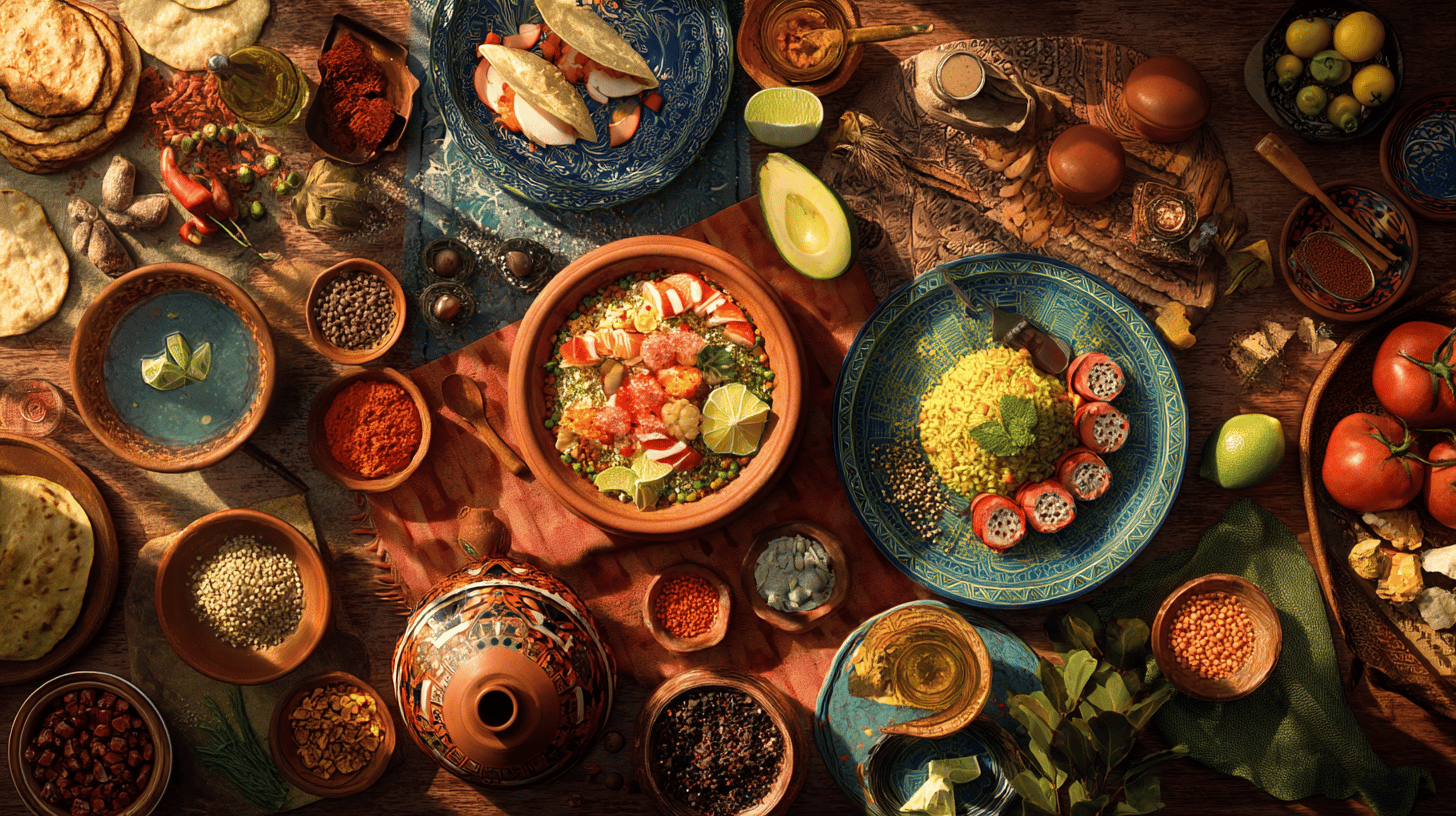A gastronomic journey can transport you to far-off lands, offering a taste of diverse cultures through their unique cuisines. In this post, we will delve into culinary adventures across different continents, showcasing the distinct flavors and traditional dishes that define regional culinary identities. From the aromatic spices of Asia to the hearty comfort foods of Europe, let’s explore the delicious tapestry of global cuisine and inspire your next culinary endeavor.
The Spice Route: Asia’s Incredible Flavors
Asia, the largest continent, is often referred to as the birthplace of many of the world’s most beloved cuisines. Each region presents a plethora of flavors, techniques, and traditions. Let’s take a closer look at some culinary highlights:
– Thai Cuisine: Known for its balance of sweet, salty, sour, and spicy flavors, Thai cuisine is a delight for the senses. Dishes like Pad Thai and Tom Yum Soup showcase the use of fresh herbs like cilantro, lemongrass, and kaffir lime leaves. Street food culture in Thailand offers an immersive experience, with vendors and night markets serving a variety of dishes that invite exploration.
– Indian Culinary Traditions: The vibrant flavors of Indian cuisine come from a rich variety of spices and cooking methods. Each state in India boasts its regional specialty—think butter chicken from Punjab, dosa from South India, and vindaloo from Goa. Experiencing the rituals of a traditional Indian thali, where you can sample an assortment of dishes on one platter, is an essential part of the journey.
– Japanese Aesthetic and Umami: Japanese cuisine is characterized by its simplicity and seasonal ingredients. The art of sushi demonstrates the delicate balance of flavors, presentation, and technique. Dishes like ramen and tempura have gained international acclaim, inviting food enthusiasts to appreciate both flavor and the artistry of Japanese cooking.
A Taste of Europe: Culinary Heritage
Europe’s culinary landscape is as diverse as its myriad cultures and histories. Each country has contributed to a rich tapestry of flavors, offering comfort food and refined gastronomy:
– Italian Passions: Italian cuisine is revered for its emphasis on fresh ingredients, simplicity, and regional variations. A classic like risotto from the north contrasts with the pizza and pasta of the south. Exploring local trattorias where the chef’s recipes have been handed down for generations provides an authentic taste of Italian culture.
– French Culinary Artistry: Known as the birthplace of gourmet cuisine, France is home to intricate dishes like coq au vin and bouillabaisse. The French cooking philosophy emphasizes technique, resulting in the elevated art of gastronomy that continues to influence chefs worldwide. Learning about the terroir of French wines paired with culinary creations enhances the dining experience further.
– Central and Eastern European Comfort Food: Central and Eastern European cuisines offer hearty and satisfying comfort food that often draws on history and tradition. Think of Hungarian goulash, which carries a legacy of spice usage, or Polish pierogi, delightful dumplings filled with various ingredients. These dishes are often accompanied by cultural celebrations, bringing friends and families together for communal meals.
Taste the Americas: A Melting Pot of Cultures
The Americas are a quilt of cultural influences, where indigenous ingredients mix with recipes brought by settlers. This results in uniquely American culinary traditions:
– Mexican Markets and Flavors: Mexican cuisine, famed for its vibrant colors and bold flavors, incorporates various indigenous ingredients such as corn, beans, and chili peppers. Traditional dishes like mole poblano and enchiladas tell stories of cultural intersections and innovations. Visiting local markets in Mexico, where vendors offer fresh produce and traditional snacks, is vital for a complete culinary adventure.
– Southern Comforts of the United States: The southern United States is known for its soulful dishes like fried chicken, collard greens, and barbecue. The interplay of cultural influences from African, Native American, and European traditions creates a rich culinary scene. Experiencing the flavors of the South often comes with a sense of community, as these meals are meant to be shared and enjoyed together.
– The Diversity of Brazilian Cuisine: With its rich indigenous roots and immigrant influence, Brazilian cuisine offers a vibrant array of dishes. From the feijoada, a hearty black bean stew, to the refreshing flavors of acai, Brazilian food reflects the country’s cultural diversity. Participating in a traditional churrasco—a Brazilian barbecue—provides an unforgettable culinary experience.
Africa: A Flavorful Journey through Heritage Africa’s culinary traditions are shaped by geography, climate, and cultural diversity:
– North African Spices and Traditions: The cuisines of North Africa, such as Moroccan, offer aromatic tagines filled with spices like saffron, cumin, and coriander. These dishes not only tantalize the taste buds but also share stories of the region’s trade and history. The tradition of sharing food plays a vital role in North African culture where hospitality is paramount.
– Sub-Saharan Culinary Diversity: In Sub-Saharan Africa, diverse ingredients such as yams, cassava, and millet form the backbone of traditional cuisines. Each country offers distinct flavors, from jollof rice in Nigeria to biltong in South Africa. Participating in food festivals where local dishes are prepared brings insights into the rhythms of everyday life.
Bringing the World Home: Cooking with Global Inspiration
Now that we’ve taken a delightful tour of culinary traditions across the globe, how can we bring these experiences into our kitchens? Here are some tips for encouraging culinary exploration at home:
Experiment with Ingredients
: Stock your pantry with spices and sauces that are staple in different cuisines. Items like soy sauce for Asian dishes, harissa for Moroccan flavors, or taco spices for Mexican fare can expand your culinary repertoire.
Join Cooking Workshops
: Many culinary schools and local organizations offer workshops that teach world cuisine. These hands-on experiences can provide insights into cooking techniques and cultural backgrounds behind different dishes.
Embrace the Culture
: When preparing a dish, don’t just focus on the recipe; immerse yourself in the culture. Play traditional music from the region, explore its history, and set the table for a meal that reflects the customs of that culture.
Share Your Culinary Creations
: Host themed dinner nights featuring the cuisines you’re exploring. This creates an opportunity for friends and family to enjoy different flavors and learn about cultural stories behind the dishes.
Final Thoughts
Delving into the world of culinary adventures is a delightful journey that expands our palates and nurtures our connection to cultures around the globe. Whether you’re seeking to recreate beloved dishes from your travels or are curious to explore uncharted culinary territories, the world of flavors awaits.
As you embark on your culinary adventures, remember that cooking is not just about filling our stomachs; it’s an opportunity to celebrate cultures, create memories, and connect with others. Bon Appétit!


